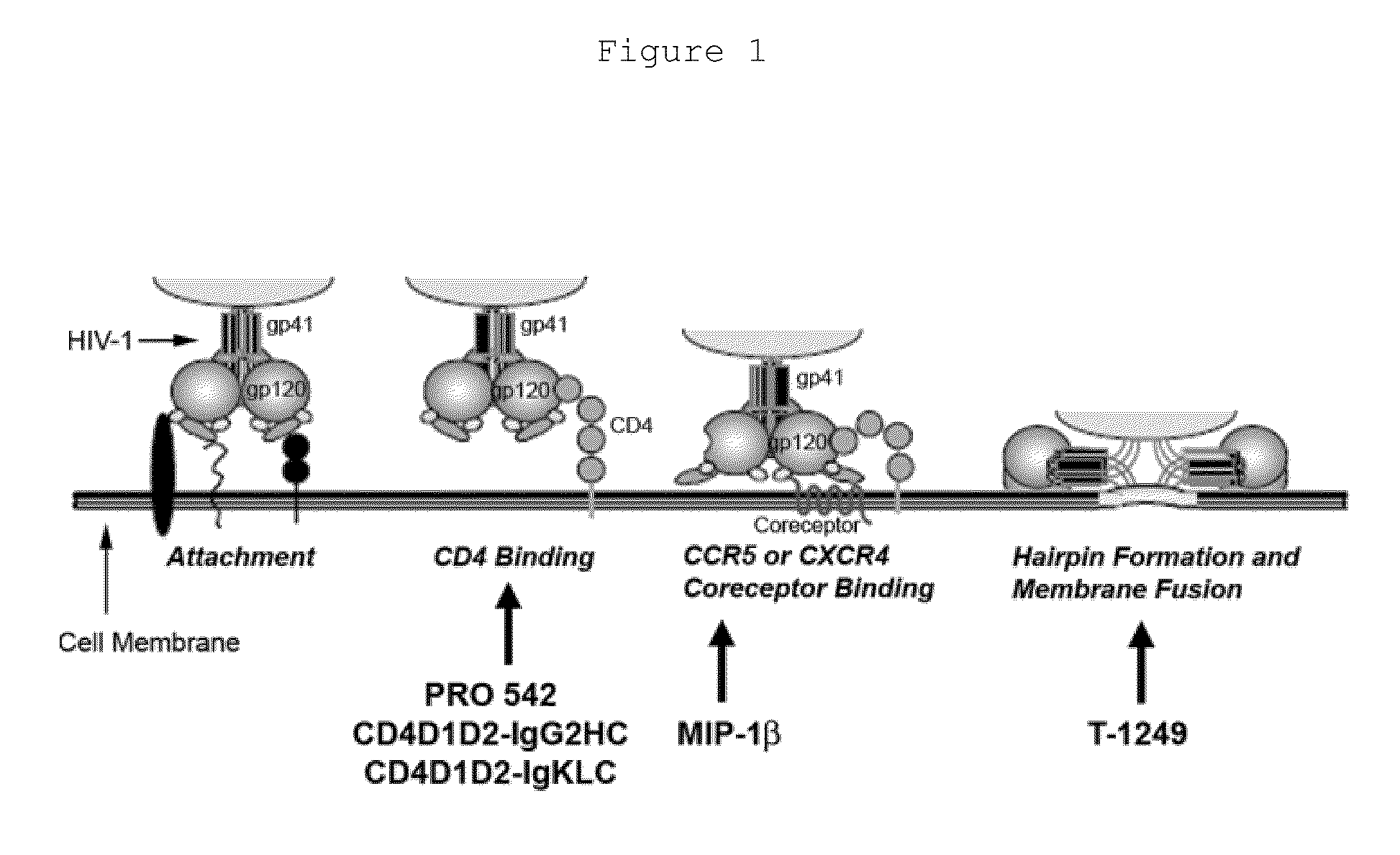Treatment of HIV and aids using probiotic lactobacillus reuteri
a technology of lactobacillus reuteri and hiv, which is applied in the field of hiv and aids using probiotic lactobacillus reuteri, can solve the problems of inability to keep up with hiv's high mutation rate, long and difficult administration to large groups of individuals, and rapid drug resistance, so as to reduce or prevent the depletion of cd4+t cells and reduce or prevent the replication of hiv
- Summary
- Abstract
- Description
- Claims
- Application Information
AI Technical Summary
Benefits of technology
Problems solved by technology
Method used
Image
Examples
example 1
[0042]Colonization of Engineered Lactobacillus reuteri in the Gut of Rhesus Macaques.
[0043]a) Selection of rhesus macaques as the animal model. The use of rhesus macaques (Macaca mulatta) as the animal model is desired. Rhesus macaques share a similar gastrointestinal tract as humans, and it has been demonstrated that Lactobacillus reuteri will colonize the gastrointestinal tracts of infant rhesus macaques safely and effectively (Kelleher S. L. et al., 2002, Pediatric Gastroenterology and Nutrition, 35(2):162-8). The use of a mouse model to examine the effects of HIV-1 on the GALT was considered, but a previous study using humanized mouse intestine indicated that although many aspects of HIV-1 GALT pathogenesis are recapitulated in these mice, it was not determined whether or not there is a direct and / or indirect pathological effect of HIV-1 on enterocytes, as seen in humans (Denton, P. W. et al., PloS Medicine, 5(1) 0079-0089). To create statistically reliable results in measuring ...
example 2
[0054]Secretion of PRO 542, MIP-1β, and T-1249 Lactobacillus reuteri RC-14 in the Gut of Rhesus Macaques.
[0055]a) The procedure for engineering Lactobacillus reuteri RC-14 to secrete PRO 542, MIP-1β, and T-1249 is performed according to Liu et al. (Liu, J. J. et al., 2007, Cellular Microbiology, 9: 120-130), in which a plasmid containing the gene fragments BspA, MIp, and Sep is transferred to Lactobacillus reuteri RC-14. The steps include as follows.
[0056]b) Culture of Lactobacillus reuteri RC-14 and preparation of genomic DNA. Wild-type and recombinant Lactobacillus reuteri is cultured in MRS broth or agar (bioWorld) without and with 10 μg per ml erythromycin at 37° C. and 5% CO2, respectively. The strains are cultured in 5 ml of MRS broth to late stationary phase and collected by centrifuge at 3500 rpm. The collected strains are washed once with 10 mM Tris-HCl buffer including 1 mM EDTA (TE, pH=8) and lysed in the TE buffer including 10 mg per ml of lysozyme at 37° C. for 2 hours....
example 3
[0063]Viral Production of GALT in Rhesus Macaques.
[0064]a) Selection of Animals. It has been demonstrated that Lactobacillus reuteri will colonize the gastrointestinal tracts of infant rhesus macaques safely and effectively (Kelleher, S. L. et al., 2002, Pediatric Gastroenterology and Nutrition, 35(2):162-8). Previous studies analyzing the effects of SIV on the GALT in rhesus macaques is reported by Li et al. (Li, Q. et al., 2005, Nature, 434: 1148-1152). To create statistically reliable results in measuring the effectiveness of the engineered Lactobacillus reuteri in reducing viral load and maintaining pre-infection CD4+T cell levels in the GALT, four rhesus macaques are used in both the control and treatment groups. Three rhesus macaques are treated with PRO 542, MIP-1β, and T-1249 and three rhesus macaques treated with PRO 542 and T-1249 to test whether or not MIP-1β causes significant inflammation in rhesus macaques.
[0065]b) Set of Controls. Four randomly selected rhesus macaque...
PUM
 Login to View More
Login to View More Abstract
Description
Claims
Application Information
 Login to View More
Login to View More - R&D
- Intellectual Property
- Life Sciences
- Materials
- Tech Scout
- Unparalleled Data Quality
- Higher Quality Content
- 60% Fewer Hallucinations
Browse by: Latest US Patents, China's latest patents, Technical Efficacy Thesaurus, Application Domain, Technology Topic, Popular Technical Reports.
© 2025 PatSnap. All rights reserved.Legal|Privacy policy|Modern Slavery Act Transparency Statement|Sitemap|About US| Contact US: help@patsnap.com



